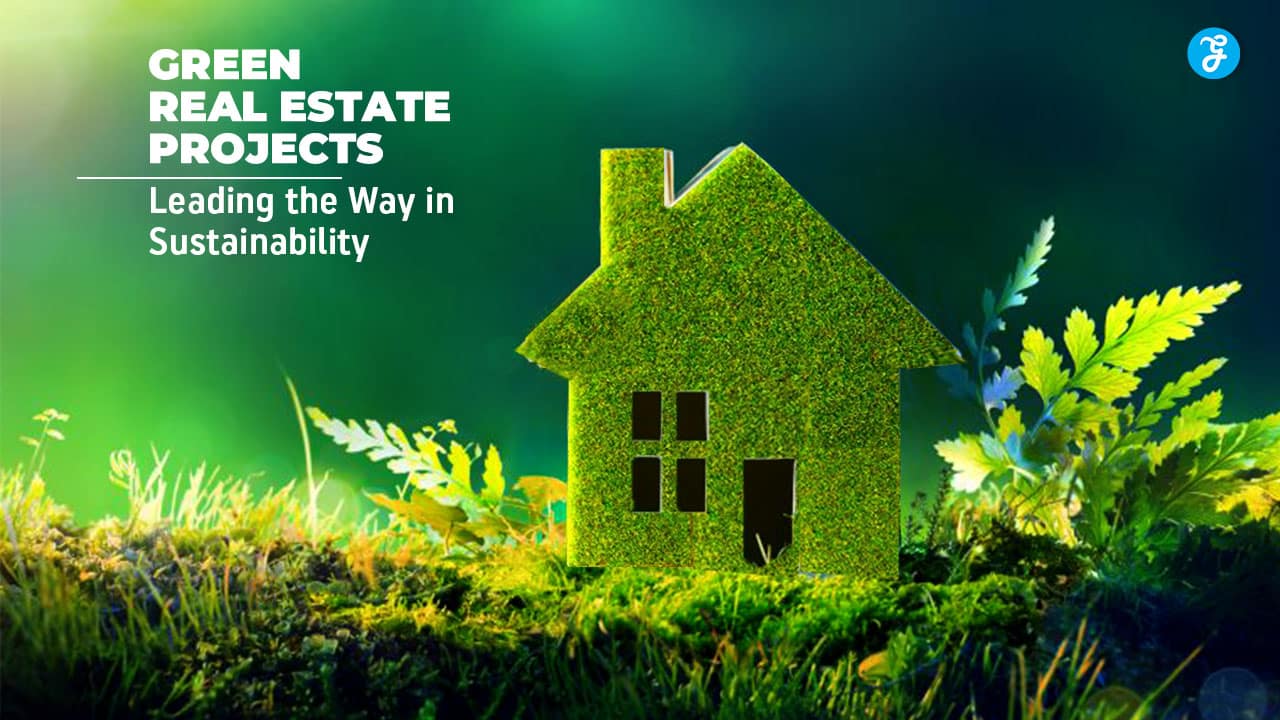As environmental awareness grows, the real estate industry is increasingly embracing sustainability. Green real estate projects prioritize eco-friendly designs, renewable energy, and innovative construction techniques to reduce their environmental footprint.
These projects not only conserve natural resources but also create healthier living and working spaces for their occupants.
In this detailed article, we’ll explore 15 trailblazing green real estate projects from around the globe, each setting a benchmark in sustainability and innovation.
1. Bosco Verticale – Milan, Italy
The Bosco Verticale, or “Vertical Forest,” is a pair of residential towers in Milan that redefine urban living. Covered with over 800 trees and 15,000 plants, these towers promote biodiversity in the heart of the city.
Sustainability Highlights
- Air Purification: The trees absorb CO2 and release oxygen, improving air quality.
- Energy Efficiency: Solar panels and geothermal energy systems power the buildings.
- Biodiversity Hub: Supports diverse species of birds and insects.
Impact
This project showcases how integrating greenery into architecture can improve urban environments while combating climate change.
2. The Edge – Amsterdam, Netherlands
Known as the world’s most sustainable office building, The Edge is a marvel of technology and eco-design. It serves as the headquarters for Deloitte.
Sustainability Highlights
- Energy Positive: Generates more energy than it consumes using solar panels and geothermal heating.
- Smart Systems: Uses IoT sensors to optimize lighting, heating, and space utilization.
- Water Conservation: Recycles rainwater for non-potable uses.
Impact
The Edge demonstrates how smart technology can enhance sustainability and improve employee well-being.
3. One Central Park – Sydney, Australia
One Central Park is an iconic mixed-use development featuring vertical gardens and innovative lighting systems.
Sustainability Highlights
- Green Walls: Vertical gardens reduce urban heat and enhance biodiversity.
- Tri-Generation Power Plant: Provides low-carbon heating, cooling, and electricity.
- Sky Garden: Reflects sunlight into shaded areas, reducing energy consumption.
Impact
This project seamlessly integrates sustainability with aesthetic appeal, setting a precedent for urban developments worldwide.
4. The Crystal – London, United Kingdom
The Crystal is a sustainability education hub that is also one of the world’s greenest buildings.
Sustainability Highlights
- Net-Zero Energy: Powered entirely by renewable energy sources.
- Advanced Insulation: Minimizes heat loss and reduces energy consumption.
- Water Recycling: Treats and reuses wastewater on-site.
Impact
As an educational facility, The Crystal inspires individuals and organizations to adopt sustainable practices.
5. Phipps Center for Sustainable Landscapes – Pittsburgh, USA
The Phipps Center is one of the few buildings globally to meet the rigorous Living Building Challenge certification.
Sustainability Highlights
- Net-Positive Energy: Generates more energy than it consumes.
- Rainwater Management: Uses rainwater for irrigation and flushing toilets.
- Native Landscaping: Promotes local biodiversity and reduces maintenance needs.
Impact
This project serves as a model for integrating sustainability into institutional architecture.
6. Green Spine – Melbourne, Australia
Green Spine is a mixed-use skyscraper with a twisting design adorned with vertical gardens.
Sustainability Highlights
- Energy Efficiency: Incorporates solar panels and energy recovery systems.
- Water Management: Features rainwater harvesting and greywater recycling.
- Urban Greening: Supports plant growth on multiple levels, reducing the urban heat island effect.
Impact
Green Spine is a shining example of how skyscrapers can balance functionality with environmental stewardship.
7. Masdar City – Abu Dhabi, UAE
Masdar City is a pioneering sustainable urban community aiming for zero carbon emissions.
Sustainability Highlights
- Renewable Energy: Powered by one of the largest photovoltaic installations in the Middle East.
- Smart Infrastructure: IoT systems monitor and optimize resource use.
- Car-Free Zones: Prioritizes walking and electric public transport.
Impact
Masdar City showcases how urban planning can align with sustainability goals in arid climates.
8. Bullitt Center – Seattle, USA
The Bullitt Center is dubbed the greenest commercial building in the world.
Sustainability Highlights
- Net-Zero Energy: Powered by rooftop solar panels.
- Rainwater Collection: Meets all water needs through harvested rainwater.
- Non-Toxic Materials: Avoids harmful chemicals in construction and finishes.
Impact
This project proves that sustainable design is achievable even for large commercial buildings.
9. Gardens by the Bay – Singapore
Gardens by the Bay is an iconic park featuring futuristic architecture and sustainable technologies.
Sustainability Highlights
- Solar Power: Solar panels generate electricity for operations.
- Sustainable Cooling: Uses a biomass-powered cooling system.
- Rainwater Harvesting: Recycles rainwater for irrigation.
Impact
This project blends sustainability with leisure, enhancing quality of life in urban areas.
10. Bosco Navile – Bologna, Italy
Inspired by the Bosco Verticale, Bosco Navile is a residential project that integrates greenery into its architecture.
Sustainability Highlights
- Vertical Gardens: Improve air quality and reduce heat absorption.
- Energy-Efficient Systems: Utilizes solar and geothermal energy.
- Community Spaces: Encourages social interaction and outdoor activities.
Impact
Bosco Navile highlights the scalability of green design in residential projects.
11. Manitoba Hydro Place – Winnipeg, Canada
Manitoba Hydro Place is a high-performance office tower designed for energy efficiency.
Sustainability Highlights
- Natural Ventilation: Reduces reliance on HVAC systems.
- Geothermal Heating: Uses earth’s natural temperature for efficient climate control.
- Energy Recovery Systems: Minimizes energy waste.
Impact
This project demonstrates the economic benefits of sustainable building practices.
12. Bosco della Vita – Copenhagen, Denmark
Bosco della Vita emphasizes sustainable living through community-focused green spaces.
Sustainability Highlights
- Urban Forests: Enhances biodiversity and air quality.
- Renewable Energy: Powered by wind and solar energy.
- Community Gardening: Encourages local food production.
Impact
This project fosters community engagement while promoting environmental conservation.
13. Sunship – Freiburg, Germany
Sunship is a solar-powered residential and commercial building in Germany’s “Green City.
Sustainability Highlights
- Net-Zero Energy: Generates all required energy on-site.
- Passive Design: Optimizes natural lighting and ventilation.
- Green Roofs: Reduce heat absorption and improve insulation.
Impact
Sunship is a testament to Germany’s commitment to renewable energy.
14. EcoCity Malmö – Malmö, Sweden
EcoCity Malmö is a sustainable housing development featuring innovative green technologies.
Sustainability Highlights
- Energy-Efficient Design: Uses triple-glazed windows and advanced insulation.
- Smart Grids: Optimizes energy distribution and consumption.
- Community Engagement: Educates residents on sustainable practices.
Impact
This project showcases how urban planning can align with environmental and social goals.
15. Central Park Tower – New York City, USA
Central Park Tower incorporates sustainable features into its luxurious design.
Sustainability Highlights
- Energy Efficiency: Uses advanced HVAC and lighting systems.
- Water Conservation: Includes rainwater harvesting and greywater recycling.
- Sustainable Materials: Prioritizes eco-friendly construction materials.
Impact
This skyscraper proves that luxury and sustainability can coexist.
Takeaways
These 15 green real estate projects exemplify the potential of sustainable architecture to shape a better future. By prioritizing renewable energy, resource efficiency, and biodiversity, these projects lead the way in combating climate change and enhancing urban living.
As the demand for sustainable spaces grows, these projects serve as a source of inspiration for developers, architects, and investors worldwide.
Embracing such innovations can pave the way for a greener, healthier planet for generations to come.










































